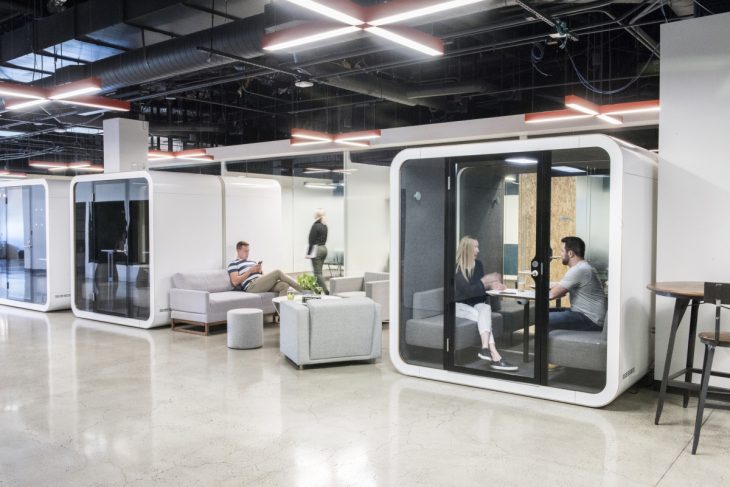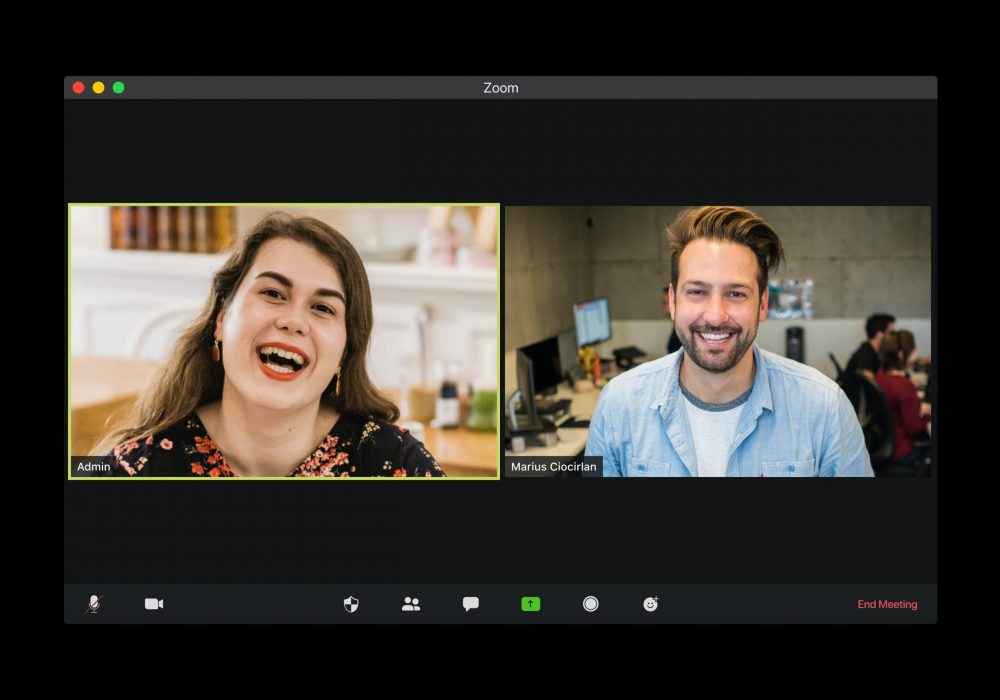Three leaders share the strategies in which their companies have been managing stress and what tips they advise to consider in your new way of day-to-day work.
In the American Psychological Association’s 13th annual Stress in America survey, results show that the number of Americans experiencing stress has risen over the past year. When surveyed individuals were asked about their personal stressors, around six in every 10 adults identified work as a significant source. This shows that even with a National Stress Awareness Month, collectively, society could be doing more to combat workplace burnout.
With National Stress Awareness Month in full swing and the COVID-19 crisis continuing to impact our daily lives, now more than ever it’s important for employees and company leaders alike to take the time to consider how to better manage work-related stress. Reflecting on the plague of anxiety and stress can require asking questions such as: Are you feeling stressed? Is it damaging your ability to be productive? Is there a way to alleviate anxieties over tasks throughout the work day?
WorkDesign Magazine connected with with three leaders across different workplace industry verticals to discuss the strategies in which their companies have been managing stress and what tips they advise to consider in your new way of day-to-day work:

From the Workplace Product Expert, Samu Hällfors, Co-founder and CEO of Framery.
First and foremost, a transparent company structure can help prevent certain anxieties that are commonly experienced by employees. A transparent workplace environment means operating in a way that creates openness between employees and managers. Transparency also means no unnecessary middle management and no hidden decision-making or processes. This invites every team member to openly voice their ideas, whether it be ways to improve products, company culture, or other business initiatives. It also provides junior level employees visibility into decisions and conversations happening at a higher level. In return, there is a better sense of creativity and innovation threaded throughout the various teams that make up a business. Transparency shouldn’t come at the cost of remote work. Even if teams are working remotely and don’t have physical access to their colleagues, conference rooms, or “water cooler” conversations, the team should remain connected virtually and practice strong communication company wide. Instant messaging and videoconferencing tools make it easier to check in with coworkers and provide updates on work being completed.
It’s also important that employees have a sense of freedom and are allowed the flexibility to find the best space to perform the current task at hand–not being confined to a desk, for example, is certain to alleviate certain workplace stress. Oftentimes when individuals assess what type of office environment would best fit them, they seek support for their primary way of working—they don’t account for the many other ways of working throughout the day, such as moments of deep individual focus and collaborative group brainstorms. People must take a more holistic approach to their working environment in order to achieve maximum productivity, and employers must ensure that a holistic approach is possible for employees–by providing them spaces to move around during the day.
This idea folds into the significance of having various thoughtfully designed areas in the workplace available to employees. Studies have shown that colors not only change an individual’s mood, but it also impacts productivity as well. That said, every color has a psychological value, so design choices in the office can impact a person’s work ethic just as much as it suggests something about their personality. For example, being drawn to blue might mean you work best when you’re surrounded by a calm energy. Whereas, if you’re drawn to yellow you likely have an optimistic personality and work best when surrounded by bright furniture. This has led to employers becoming more mindful, not just of workplace design in general, but specifically the ways in which spaces–whether it be the colors on the wall or the furniture that fills it–can support employee efficiency and happiness, while lessening work-related stress
Next, It’s crucial that employees feel like they can be themselves at the office. Stress can often derive from a toxic company culture that demands each individual go about their tasks in an almost “robotic” way. Employees should be encouraged to keep personal mementos at their desks to showcase their unique personalities, as well as find ways to bond with each other and talk about things outside of work while at the office.
Additionally, a major cause of stress-induced burnout is the lack of control individuals might have over their own workload. It’s important to organize your tasks for each day, as well as outline what needs to get accomplished for your team. Project management platforms are becoming increasingly prevalent for this reason.
Encouraging all employees to have a dedicated space for team meetings to strategize and touch base on tasks at hand, is another way to optimize the ability for employees to manage and be managed by visually communicating deliverables. A dedicated space, such as an acoustic pod with whiteboards—that directly benefits the organization of teams, as well as the communication of their tasks and timelines—really optimizes the ability for employees to have a healthy workflow. It really boils down to visibility, when managers and employers know what’s on each other’s plates, it’s easier to maintain a steady workflow to ensure no one employee is being stretched too thin, or on the flipside, being underutilized. All in all, task management is key to ensuring employee happiness, stress control, and workplace productivity.

From the Technology Expert, Robert Yuen, Co-founder and CEO of Monograph.
It’s important during this time to make things contextual, be sensitive, and never forget that the ‘team’ is made up of real people living real lives–as we are all going through this unusual time together. Employees should be encouraged to look out for each other and themselves. We can all do our part in helping each other manage our stress levels. One way of doing this is by being actively engaged on calls, listening closely, taking notes, and even dressing for the occasion if it’s over video.
Having a set lunch hour either for yourself, your coworkers, or even your family if you’re at home with them is a guaranteed way to relieve yourself of work-related stress throughout the day. Even if it’s just jumping on a Zoom call with your colleagues to talk about life outside of work–such as venting about being in quarantine or talking about what news articles you’ve been reading. After all, culture is what drives a company’s success. It requires a combination of empathy and soft skills—the ability to understand and share the feelings of others. It’s key not to lose this sense of company culture as a result of the COVID-19 situation.
Mitigating stress can really boil down to shifting your focus to be less on the set number of hours you work and more so on maintaining productivity, consistent communication, and connectivity. This mindset dates back to the founding of Monograph as a company. For example, when our team hired the first employee, it was important to us that we define our culture as one in which work-life balance is at the core, and we know employees are more effective when they can take time off and recharge. This is what led to the 4-day work week. Our team members work 32-hour weeks and new employees are able to decide with the team which days they’ll take off.

From the Designer, Anne Kniffen, Principal of Corporate Interiors at Perkins and Will, Dallas Studio.
One helpful strategy in navigating the challenges and stresses caused by working from home is to change locations throughout the day. Move around your desk to the breakfast room, dining room, or even the kitchen counter for a time. Depending on where you live, working outside might be an option worth exploring as well.
Taking breaks is a great idea. It’s easy to get wrapped up in work, when there is no one else around you who is taking breaks or getting up from their desks for lunch. Without these normal in-office signals, it’s easy to forget that you haven’t looked up from your computer or paperwork in a long time. Taking a break could merely be changing the scenery for a moment, grabbing a snack from the kitchen, or making a personal phone call to clear your head. Working from home can feel like a trap sometimes–don’t fall victim to a breakless day!
A workout routine could be a fresh new stress outlet to establish. Free weights, bicycles, rowing machines, yoga, exercise mats–whatever it might be that gets you moving, having it at home is a guaranteed way to help relieve you of certain stress. There are so many options now available online and on your phone. You can download pilates classes or planking routines for example–there are even group Zoom yoga classes! Get creative and have fun with this type of stress relief.
Lastly, meditation and relaxation routines are an awesome way to take your mind off of work-related stress. Even if it’s just for 30-45 minutes or so–they can be simple techniques that are highly effective. Turning on classical music or listening to the radio is another way to relieve your mind from the things that might be weighing you down on a day-to-day basis.
Life Beyond the Office
Balance is one major condition for maintaining workplace happiness that all of the thought leaders can easily agree upon, so it is extremely important to encourage employees to do things in their life outside of work–even if living in quarantine or with stay-at-home mandates can be limiting. Maintaining a fulfilled life outside of the office is a guaranteed way to ensure your happiness while you’re plugged into work from home or physically at the office. Sometimes this seemingly simple acknowledgement is the greatest stress reducer of them all.

